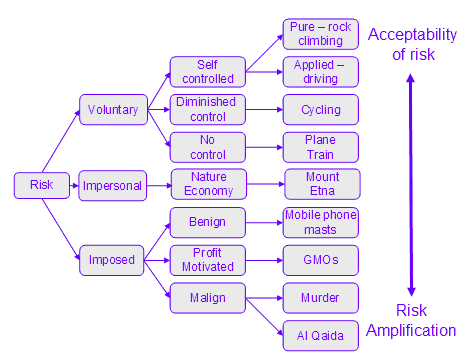In the aftermath of the 2005 7th July bombings in London I wrote a piece entitled “7/7: What kills you matters – not numbers”
I illustrated it with a diagram highlighting the remarkable lack of correlation between quantified measures of risk and common response. I identified two key variables that helped to explain this lack of correlation: the level of control that those taking, or exposed to, the risk felt that they had and, in the case of involuntary risks, the perceived motives of the imposer of the risk.
Risk Amplification
52 people were killed by the 7/7 bombers. I noted that in Britain at that time on an average day nine people die and over 800 are injured in road accidents. The mangled metal, the pain of the victims, and the grief of families and friends, one might suppose, are similar in both cases. Measured in terms of life and limb, 7/7 represented six days of death on the road. But thousands do not gather weekly in Trafalgar Square to manifest their collective concern. Why?
Simon Jenkins has become a routinely calming and rational voice in the aftermath of such events. Discussing the Boston marathon bombs he provides a good answer in todays Guardian. He succinctly describes the problem: Such deeds are senseless murders. What makes them terrorist is the outside world rushing to hand their perpetrators a megaphone. See After the bomb, hysteria is the terrorists best weapon. I recommend it.
Another recommendation from yesterdays New York Times by Thomas Friedman: Bring On the Next Marathon.

